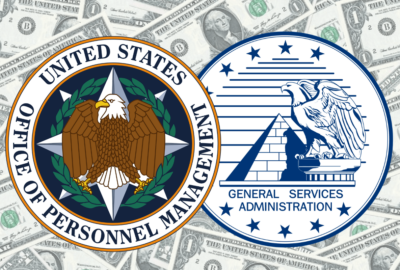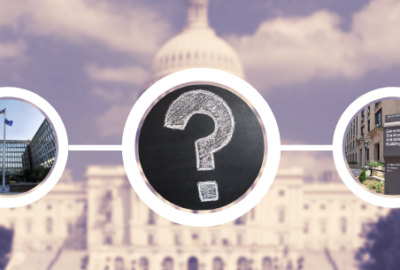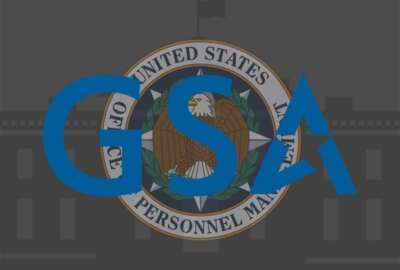
OPM-GSA merger may be on hold, but administration wants to spend $70M on it next year
The General Services Administration will also assume management over the Office of Personnel Management's office space in Washington later this fall.
The plan may be technically on hold, but the White House is asking for $70 million in no-year appropriated funding to cover the costs of its proposed merger of the Office of Personnel Management with the General Services Administration.
The request, which was part of a joint 2021 budget submission from GSA and OPM, acknowledges recent law prohibiting the move of OPM’s statutory functions to other agencies and an upcoming study by the National Academy of Public Administration. NAPA is supposed to review and recommend options for OPM and its future.
But if and when the merger does move forward — and Congress grants the agencies the appropriate statutory authorities needed to reorganize — OPM and GSA need to invest “significant time and resources” to ensure a seamless transition, the 2021 budget request reads.
The funding will be used to buy new IT equipment, integrate OPM business processes and systems into GSA’s networks and move and transition staff, according to the 2021 request.
“Transition costs are primarily driven by the IT-related remediation and transformation work necessary to ensure OPM IT systems are securely integrated into GSA’s network, a complex effort that must be appropriately resourced given the mounting technical debt and challenges OPM has faced in modernizing and securing its IT infrastructure and will continue to deepen if not aggressively addressed,” the request reads.
Though the proposal to merge OPM with GSA has largely lacked detail so far, this isn’t the first time the administration has positioned a specific dollar amount behind the merger. Last year’s budget request included $50 million to support the OPM-GSA merger, which Congress ignored.
The administration anticipated it will cost another $1 million to merge OPM’s inspector general functions with GSA’s OIG, according to the budget request.
Like last year’s submission, the joint OPM-GSA budget request still largely reflects the existence of two separate entities. The 2021 request, for example, doesn’t explain the transition of specific OPM organizations to GSA.
Read more Budget news
But unlike the previous year’s request, the budget submission for the Office of Management and Budget doesn’t mention the creation of a new federal workforce policy office, which was a key tenet of the administration’s plan to reorganize OPM.
The 2021 budget, however, does shed more light on OPM’s financial situation, which changed drastically when the National Background Investigations Bureau, nearly 2,700 NBIB employees and $1 billion in revenue from the governmentwide security clearance business transferred to the Pentagon as part of the Defense Counterintelligence and Security Agency back in October.
As it did for part of 2019, the Defense Department will continue to “buy back” $35 million in OPM services, including existing NBIB security clearance systems, hardware, infrastructure, procurement support and facilities, through at least fiscal 2021, according to the request.
Still, OPM anticipates a $60 million shortfall due to the NBIB loss, though it did ask for additional $25 million to mitigate the funding gap.
The agency received an additional $34.5 million in 2020 to alleviate the impacts of the common services shortfall, a solution that OPM described as unsustainable and not “appropriately geared toward the success of its long-term mission.”
The request for $70 million is a “no-year” appropriation, meaning GSA wouldn’t be obligated to spend all of it in 2021. Instead, the funding could be used as needed, which wouldn’t likely occur until NAPA completes its study and Congress grants OPM and GSA necessary legal authorities. The NAPA study is expected to take at least one year to finish.
Margaret Weichert, the outgoing deputy director for management at the Office of Management and Budget, acknowledged the joint OPM-GSA budget request in speaking with reporters last week.
“We in no way, shape or form will be bucking either the spirit or the mechanics of what was included in the NDAA language about the study associated with OPM and GSA,” she said.
Instead, Weichert said she was confident the NAPA study, whenever it’s finished, would prove the need to integrate federal management services, like those of OPM and GSA.
Higher rent for OPM?
The NBIB transfer to the Pentagon appears to have posed still further uncertainties for OPM.
Because NBIB — now a component of DCSA — still occupies space within OPM’s Theodore Roosevelt Building (TRB) in Washington, the agency is now technically managing a multi-tenant space.
But that will soon change.
GSA told OPM last July it planned to revoke the agency’s existing delegation for the operations and maintenance of the TRB, a GSA spokesperson told Federal News Network.
The delegation of authority was rescinded at the request of the then-acting OPM director, the GSA spokesperson said. Weichert was the agency’s acting director in July, when GSA informed OPM it would take over management of the building.
On one hand, the revoking of OPM’s delegation of authority over its building isn’t especially new or groundbreaking.
Read more OPM news
“The GSA administrator has statutory authority to operate and maintain the building, or to delegate those responsibilities to occupant agencies,” the GSA spokesperson wrote in an email to Federal News Network. “Also, the Theodore Roosevelt Building recently became a multi-tenant building, and GSA rarely allows the operation and maintenance of multi-tenant buildings to be delegated.”
But on the other hand, the revocation will cost OPM $2 million in higher rent costs, according to the agencies’ joint budget submission, and the timing of the decision may raise further questions about the administration’s intentions for its proposed merger.
Discussions over the management of the OPM building have been ongoing for several months. Weichert, in describing ways the administration could advance the merger administratively, has previously suggested OPM could outsource some of its functions and assets, including its office space, for GSA to manage.
GSA is already helping OPM modernize several of its legacy IT systems through the agency’s Centers of Excellence initiative.
Though having GSA manage the OPM building may have little to no visible impact on the agency’s employees who work there, it’s unclear — at least at this point — what immediate benefits, cost efficiencies or savings the change would bring to OPM or government in general.
GSA is currently conducting a housing study of the building to determine how OPM could better utilize its existing space and whether other agencies could eventually occupy the vacant parts of the TRB.
“GSA and OPM will know more about potential savings when the study is completed,” the spokesperson said. “If the results are similar to studies GSA had conducted for other agencies, better space utilization could result in significant annual savings for OPM and also for the federal government by moving other agencies out of private sector leased space into federally-owned space.”
GSA will assume authority of the OPM building in October 2020, the agency spokesperson said.
Copyright © 2025 Federal News Network. All rights reserved. This website is not intended for users located within the European Economic Area.
Nicole Ogrysko is a reporter for Federal News Network focusing on the federal workforce and federal pay and benefits.
Follow @nogryskoWFED
Related Stories







